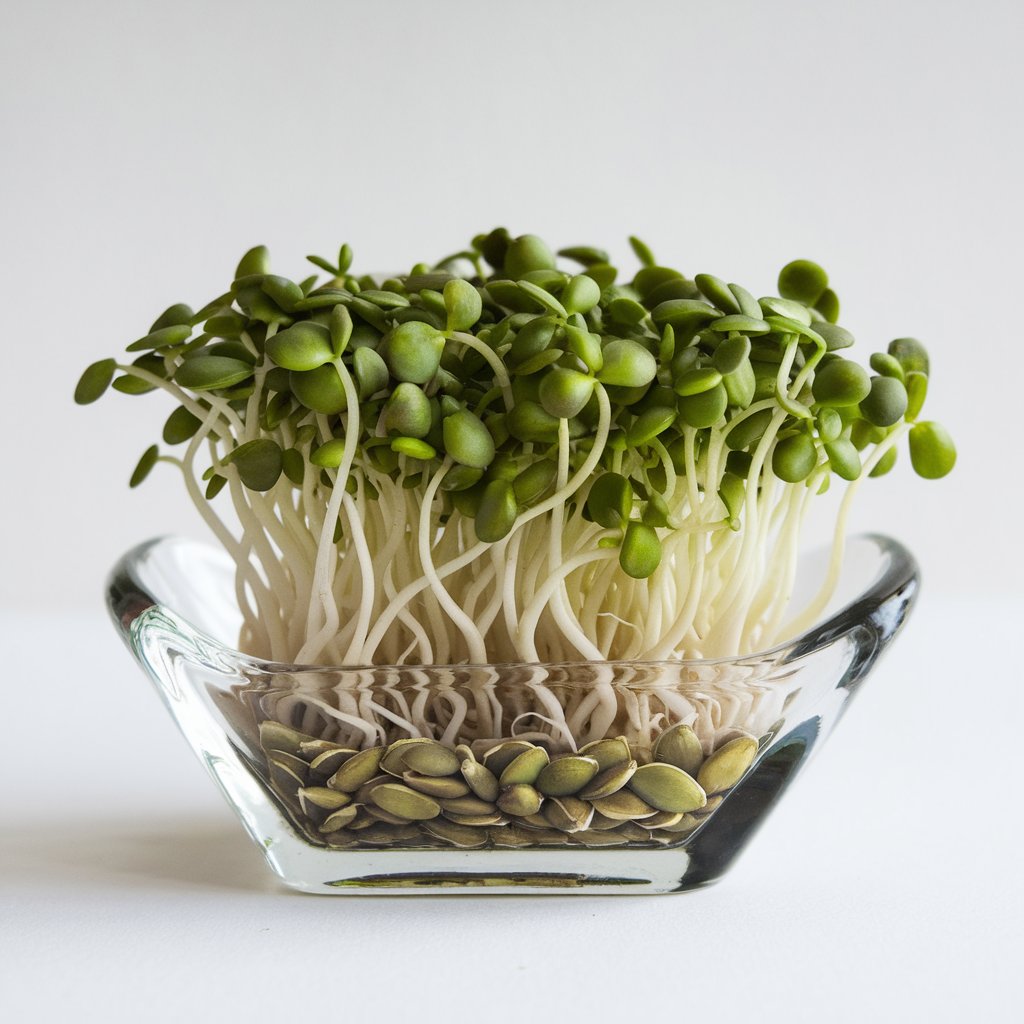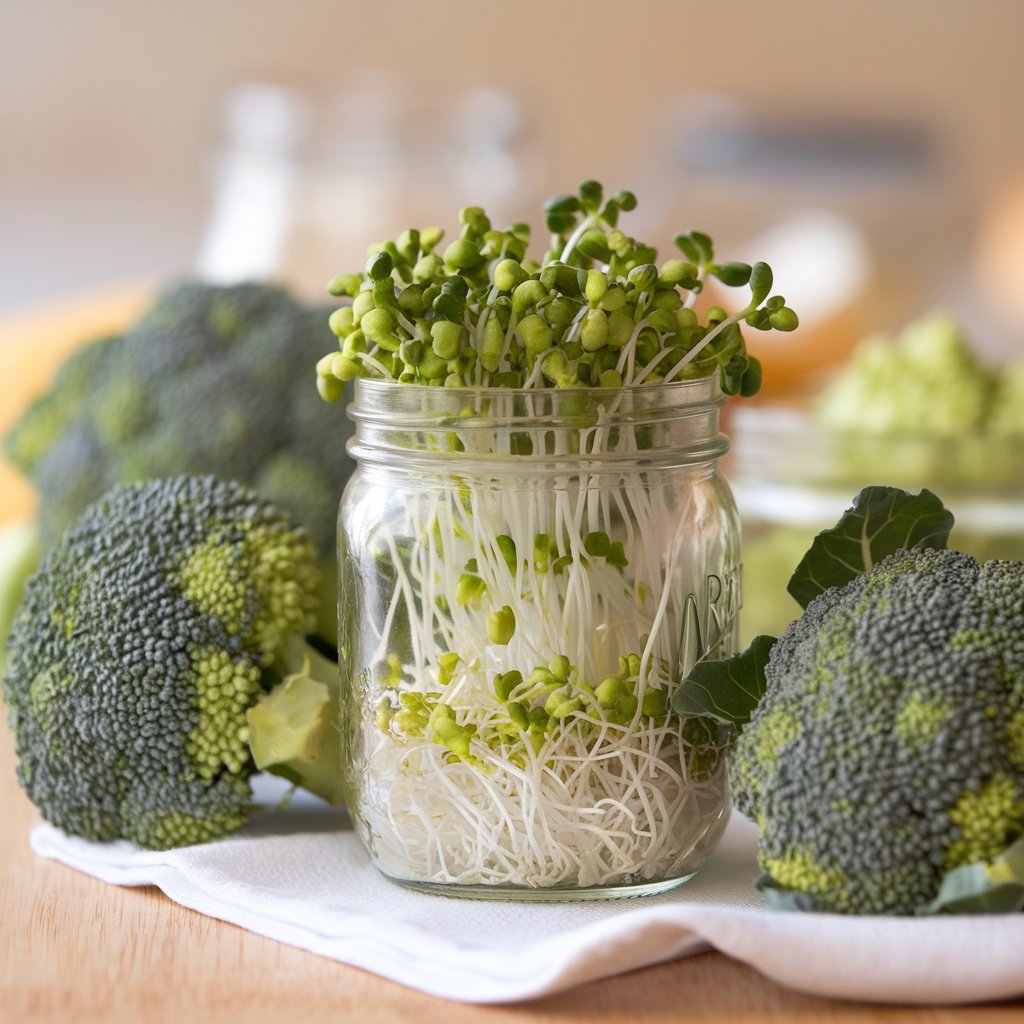Pumpkin seed sprouts are sprouted pumpkin seeds. Through the sprouting process, these little seeds transform into crunchy, nutrient-rich sprouts that can be added to salads, smoothies, sandwiches, and more. Pumpkin seeds are already known for their health benefits, but sprouting them enhances the nutritional content and makes it easier for the body to absorb key nutrients.
Nutritional Benefits of Pumpkin Seed Sprouts
Growing your own pumpkin seed sprouts brings a wealth of nutrients straight to your plate. Here’s why they deserve a spot in your diet:
- High in Protein: Pumpkin seed sprouts are a great source of plant-based protein, making them ideal for vegetarian and vegan diets. They’re also a perfect addition for anyone looking to add more protein without adding meat.
- Rich in Vitamins and Minerals: Pumpkin seeds naturally contain high amounts of magnesium, iron, zinc, and potassium. Sprouting amplifies these nutrients, making them more bioavailable, so your body can absorb them better.
- Antioxidant Powerhouse: With antioxidants like vitamin E, pumpkin seed sprouts help reduce oxidative stress, supporting overall immune health and skin vitality.
- Supports Heart Health: The combination of magnesium, zinc, and antioxidants promotes cardiovascular health by reducing blood pressure and cholesterol levels.
- Boosts Digestion: Pumpkin seed sprouts contain fiber and enzymes that help digestion, making them easier on your stomach than the unsprouted seeds.
How to Grow Pumpkin Seed Sprouts at Home
Growing pumpkin seed sprouts is a simple process that’s perfect for beginners, and you don’t need any fancy equipment. Here’s a step-by-step guide:
What You’ll Need
- Raw pumpkin seeds: Make sure they’re not roasted or salted—only raw seeds will sprout.
- A glass jar or sprouting tray: A mason jar works well, but there are sprouting trays available if you prefer.
- Mesh or cheesecloth and a rubber band: This will be used to cover the jar for drainage.
- Filtered water
Step-by-Step Instructions
- Rinse the Seeds: Begin by rinsing your raw pumpkin seeds thoroughly in cold water to remove any dirt or impurities.
- Soak the Seeds: Place the rinsed seeds in a glass jar and cover them with filtered water. Allow the seeds to soak for 8-12 hours, or simply leave them overnight. This softens the seeds and starts the germination process.
- Drain and Rinse: In the morning, drain the water from the jar and give the seeds a fresh rinse. Cover the mouth of the jar with mesh or cheesecloth, securing it with a rubber band.
- Invert and Let Sprout: Turn the jar upside down at a slight angle so excess water can drain while allowing airflow. Place the jar somewhere dark or out of direct sunlight.
- Rinse Twice a Day: Continue to rinse and drain the seeds twice daily to prevent mold and keep them hydrated.
- Wait for the Sprouts to Grow: After about 3-5 days, you’ll see the seeds begin to sprout. They’re ready to eat once the sprout tail reaches about a half-inch in length.
- Harvest and Store: When your sprouts are ready, give them one last rinse, then store them in the refrigerator. They’ll stay fresh for about a week.
Tips for Growing Pumpkin Seed Sprouts
- Use Clean, Quality Seeds: Always start with fresh, raw pumpkin seeds. Older seeds may not sprout as well.
- Prevent Mold: Proper drainage is crucial. Make sure your jar or tray has enough ventilation, and rinse the seeds twice daily.
- Watch the Temperature: Sprouts prefer a moderate room temperature, around 68-72°F. Keep them out of direct sunlight to prevent overheating.

Delicious Ways to Enjoy Pumpkin Seed Sprouts
One of the best parts about pumpkin seed sprouts is their versatility. Try these inventive ideas to add them to your meals:
- Salads and Wraps: Add a handful of pumpkin seed sprouts to salads or wraps for a satisfying crunch.
- Smoothies: Toss a small handful into your morning smoothie for a nutrient boost.
- Stir-Fries and Bowls: Lightly stir-fry the sprouts for a warm, crunchy addition to your favorite grain bowls.
- Topping for Soups and Toast: Sprinkle them on top of soups or avocado toast for a unique flavor twist.
Health Benefits Backed by Science
Research has shown that sprouting seeds can boost their nutrient content, increase digestibility, and make minerals like iron and zinc more bioavailable. The process of sprouting activates enzymes, which help your body break down food more efficiently. With their blend of protein, fiber, antioxidants, and essential fatty acids, pumpkin seed sprouts contribute to a balanced diet, especially for those focusing on plant-based nutrition.
Final Thoughts on Growing Pumpkin Seed Sprouts at Home
Pumpkin seed sprouts offer an easy and rewarding way to add more nutrients to your diet, with little more than a jar and some water. They’re an ideal crop for small-space gardening, bringing fresh, homegrown greens into your kitchen even in the coldest months.
So, why not give it a try? With their high nutritional value, easy growing process, and versatility, pumpkin seed sprouts could be the perfect addition to your indoor gardening routine and a new favorite ingredient in your kitchen.
Sprout your way to better health with pumpkin seed sprouts, and see how this small effort in your gardening routine can have a big impact on your wellness! Whether you’re new to sprouts or an experienced gardener, growing pumpkin seed sprouts is a fun, easy, and healthy project for anyone who wants to take their nutrition to the next level.
Do you want to learn more about how to sprout different seeds? Click the link Sprouts to learn more.




